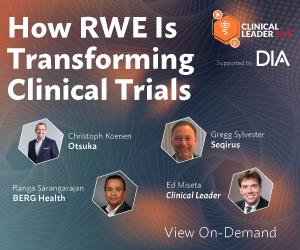Rare Diseases: How To Leverage Social Media For Patient Analysis
By Youbean Oak, Bill Woywod, and Paige Cooper, Guidehouse

For life sciences companies struggling to find crucial insights into rare diseases, the internet offers a trove of public data to tap into to learn more. As many as 7,000 rare conditions together affect an estimated 25 to 30 million Americans in total. While breakthroughs for novel therapies offer a promising way to shift the macabre trajectory of some life-threatening rare diseases, many more await remedies. The small, often dispersed populations make studying them, developing treatments, and recruiting for clinical trials extremely difficult.
In fact, despite the access to comprehensive claims databases and advances in computational capacity that enable machine learning, traditional data analysis of rare diseases produces unreliable results. The traditional analytical toolkit runs into challenges when applied to rare diseases because of insufficient sample sizes and a lack of granularity within the standard diagnosis code framework for these highly specific conditions. Analysis of publicly available online data and social media can help overcome both of these limitations to connect and pull together meaningful insights.
Leveraging this open-source data, that is anonymized with the removal of patient identifiers, can help companies better understand the current landscape and impact of individual rare diseases, especially where it might not be possible via other pathways (e.g., electronic medical records [EMR] data, rare disease registries, anonymized patient-level data, other types of claims data).
Through publicly shared online content from patient advocacy, support, and fundraising groups as well as patients themselves, companies can come to understand more about patient characteristics, experiences, and influences to better meet the needs of the patients.
Social Media’s Rare Lens
For reference, the United States defines a rare disease as a condition that affects fewer than 200,000 people. In practice, the patient populations for many real-world rare disease indications number in the low thousands, and only certain categories – birth defects and some cancers and infectious diseases – are reliably tracked.
This is where open-source online data comes in. Online and social media platforms and their networks of users provide an unparalleled environment for the public exchange of information and ideas, accessible to nearly anyone with an available internet connection. The interactive nature of social media facilitates and solicits unique forms of user engagement and information, empowering users to interact and engage in real time with other people and organizations. Individual expressions and perceptions represent discrete data points – opportunities to uncover, interpret, and evaluate valuable insights.
Online and social media research and analysis can offer important information related to:
- Geography – Reveal geographical differences in data, identifying opportunities for resource allocation or concentrated messaging outreach. It also offers a way to gather insights into market regions that do not have strong mechanisms in place to collect claims-type data and/or do not make data available to external entities.
- Demographics – Identify distinct voices across demographic type (e.g., gender, age, race, organizational ties) in some circumstances.
- Channels – Understand where stakeholder groups go for related information and determine primary distribution channels, types of media association, and key opinion leaders (KOLs). They also can help companies learn more about distinct stakeholders (e.g., healthcare practitioners, regulatory authorities, payers, patient advocacy groups).
- Trends – Surface and comprehend trend and pattern development across time and space, taking into account the underlying qualitative dimensions of conversations. Plus, because online and social media platform data can often be studied in near real time, it offers a faster line of sight into what is happening than other data sources that tend to only be able to offer historical views.
For example, in a recent case, a life sciences company investigating a therapy option needed more information on a genetic mutation associated with a rare disease. Using targeted queries, analysts examined existing online communities and frequently associated keywords surrounding the genetic mutation. From there, using a publicly available online sample of individuals and communities, the analysts were able to confirm multiple cases of the mutation, among other key findings.
In another recent case, a company analyzed multiple crowdfunding platforms to better understand patient needs for a cell and gene therapy option. Learning more about the fundraising needs and locales enabled the company to gain an understanding of the unmet needs on a global scale and develop innovative short-, mid-, and long-term strategies to improve patient access.
Real-Time Access To Real-Life Patient Experiences
Social media and online data can be used for more proactive patient group identification – including learning about the undiagnosed population’s online discussions of specific symptoms or indications – and help connect patient advocacy groups to resources for novel treatments. It also can be used to understand existing patient experiences with treatment, along with potential uptake barriers and facilitators.
For example, a pharmaceutical company with a revolutionary therapy for an extremely rare disease aimed to identify potential patients. In early trials, the therapy had proven exceptionally effective, and the drug received U.S. Food and Drug Administration approval. But the company needed more information to design and deliver effective patient support services for patients and providers. The company analyzed online public data sources to find active patient expressions of their experiences related to the disease, including issues with treatment costs. These insights helped the company tailor its patient support programs, incorporating these learnings.
Social media analysis also helps companies understand what people are saying about treatment options and what they are experiencing during in-progress therapy. Through open forums and publicly shared content, companies can read, see, and hear what others are posting online and understand, interpret, measure, analyze, and assess individuals’ experiences in comparison to one another. They also gain the refined ability to understand language within its nuanced context and at scale – through text, pictures, video, audio, infographics, etc. – across an array of social networks and digital platforms.
In addition, companies can conduct regular analysis of online activity in near real time for updates to survey the landscape and inform commercialization strategies, marketing programs, and outreach campaigns. For example, they can:
- Conduct international analyses to adapt tactics to the unique market needs. Social media can provide tactical, frontline insights in geographic markets where other data sources may be more limited (e.g., limited availability of claims data, EMR).
- Create a common operating view of relevant stakeholders in the ecosystem, such as healthcare providers, regulatory authorities, and payers.
- Leverage near real time insights about access barriers to inform access expansion strategies.
- Identify key influencers who can potentially offer partnering opportunities for medical affairs.
- Make more agile decisions, such as in refining product development or commercialization strategies.
When leveraged to its full extent, social media research and analysis can be used to generate and test hypothesized drivers of social media activity, find correlations and predict what is likely to happen, anticipate changes, and identify courses of action.
Empowering Agility
Analyzing social media and online data requires a specialized skillset that is different from analyzing numerical data. While there are many existing tools that provide some general social listening capabilities, their capabilities vary and are not comprehensive. Furthermore, traditional social listening platforms often lack out-of-the-box information-gathering capabilities for Big Data analysis. Because of this, it is critical to have a team of individuals who have specific expertise in working with text data and who also are well versed in what can be collected and how – compliantly – from various online platforms.
Publicly available online and social media data offers life sciences companies a pioneering way to access an abundance of previously unattainable insights. By keeping abreast of what’s happening in real time, companies can discover and act on opportunities to invest in life-changing products and services for even the rarest diseases. They also can connect to other stakeholders who can help advance the awareness, diagnosis, and treatment of rare diseases.
About The Authors:
 Youbean Oak is a director in the Guidehouse Life Sciences practice. She has experience across a variety of therapeutic areas and functions and has supported top-25 pharmaceutical companies as well as small to midsize life science companies in successfully commercializing their scientific innovations. In particular, her area of focus is early commercial strategy for innovative cell- and gene-based therapies that have the potential to profoundly impact the existing treatment paradigm, and she leads the Cell & Gene Center of Excellence at Guidehouse.
Youbean Oak is a director in the Guidehouse Life Sciences practice. She has experience across a variety of therapeutic areas and functions and has supported top-25 pharmaceutical companies as well as small to midsize life science companies in successfully commercializing their scientific innovations. In particular, her area of focus is early commercial strategy for innovative cell- and gene-based therapies that have the potential to profoundly impact the existing treatment paradigm, and she leads the Cell & Gene Center of Excellence at Guidehouse.
 Bill Woywod, MPH, MBA, is an associate director in the Life Sciences practice at Guidehouse, where he leads Big Data analytics and machine learning projects. He has played a central role in expanding Guidehouse’s deep data analytics capabilities, including the development and execution of sophisticated claims data analyses and machine learning initiatives for clients in the medtech and biopharma industries. Previously, he worked as a data scientist at a large regional health plan, where he led the development and successful execution of the organization’s first machine learning program.
Bill Woywod, MPH, MBA, is an associate director in the Life Sciences practice at Guidehouse, where he leads Big Data analytics and machine learning projects. He has played a central role in expanding Guidehouse’s deep data analytics capabilities, including the development and execution of sophisticated claims data analyses and machine learning initiatives for clients in the medtech and biopharma industries. Previously, he worked as a data scientist at a large regional health plan, where he led the development and successful execution of the organization’s first machine learning program.
 Paige Cooper is a senior consultant with Guidehouse’s Advanced Solutions practice. She helps lead projects with the Open Source Solutions team – a dedicated team of open source analysts and research specialists that brings technical expertise across industry verticals. Her concentration within open source has focused on developing and applying methodologies for examining the public’s use of social media platforms to identify risks/threats and to operationalize trends, beliefs, and sentiment within public perceptions, as related to critical issues and topics impacting high-profile clients across government and industry verticals.
Paige Cooper is a senior consultant with Guidehouse’s Advanced Solutions practice. She helps lead projects with the Open Source Solutions team – a dedicated team of open source analysts and research specialists that brings technical expertise across industry verticals. Her concentration within open source has focused on developing and applying methodologies for examining the public’s use of social media platforms to identify risks/threats and to operationalize trends, beliefs, and sentiment within public perceptions, as related to critical issues and topics impacting high-profile clients across government and industry verticals.

